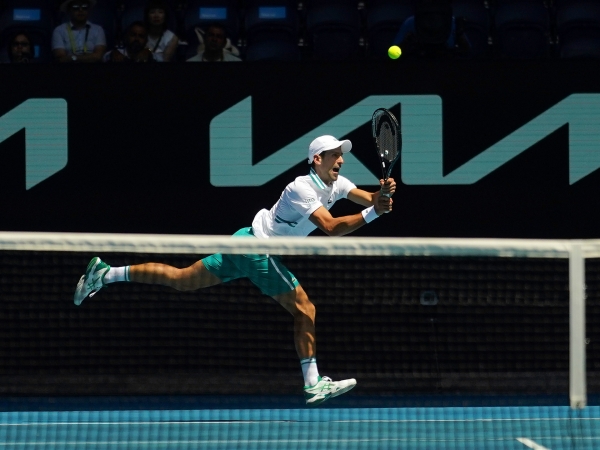Notable for incredible consistency and his abilities as a human ‘back board’ behind the baseline, it has instead been Daniil Medvedev’s aggressive instincts that have risen to the fore at AO 2021.
The Russian, riding a 20-match winning streak into Sunday night’s men’s final against Novak Djokovic, has struck the ball harder and positioned himself more offensively on court than the Serb on his journey through the draw.
Which is significant, given Djokovic can clock the ball with significant pace himself and often likes to play up on the baseline, taking the ball early to control rallies.
Upping the ante
Almost all of Medvedev’s strokes are registering faster average speeds, beginning with the serve, where Medvedev has attained both an average first serve speed (202.7km/h) and top speed (218.8km/h) almost 10km/h hour faster than Djokovic.
It’s a similar story on the return, with Medvedev registering a higher average speed off first serves (109km/h to Djokovic’s 98.6km/h) as well as second serves, where his average speed of 121km/h is 14km/h faster than Djokovic’s.
Granted, this is partly explained by Medvedev’s return position, much deeper in the court compared to where Djokovic stations himself and thus allowing the Russian to take a bigger cut at the ball.
Medvedev is, on average, returning first serves from more than three metres behind the baseline – Djokovic typically lingers just two metres back – and more than two metres behind the baseline on second-serve returns. Djokovic, meanwhile, is almost up on the baseline when returning second serves.

Yet Medvedev does not maintain this deep, defensive court position as rallies unfold.
The world No.4 is connecting with more than 17 per cent of his groundstrokes inside the baseline – a far higher percentage than Djokovic, who is impacting just 12.5 per cent of forehands inside the baseline and less than 10 per cent on his backhand wing.
And when you consider that Medvedev’s average forehand speed is equal to that of Djokovic and his backhand is, on average, 5km/h faster than the world No.1’s (at 113km/h), it’s clear that Medvedev is looking to be the aggressor in rallies.
It may help explain why Medvedev has averaged significantly less time on court than Djokovic in winning six singles matches to arrive in the final.
Supreme Serb
Djokovic, however, has shown his own aggressive instincts on his journey at AO 2021.
He takes almost 60 per cent of third rally shots – his first strike following his serve – on the forehand wing (compared to just 43.7% by Medvedev), a shot which typically generates more pace and allows players to dictate.
And he applies more time pressure – a metric measured as the time taken for the ball to travel past the net – to opponents with his return, allowing them significantly less milliseconds to react and prepare for the third shot than compared with Medvedev.
It will be intriguing to see how these different approaches match up on Sunday evening at Rod Laver Arena.